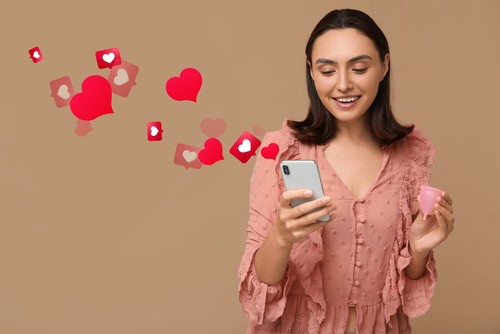Psychologists Reveal the 6 Dating App Photo Red Flags Turning People Off
Cuffing season is officially here. UK singles are looking for a new relationship to get them through the cold winter months – and for many, that starts with a better photo.
But with research showing that people form impressions of faces in as little as 100 milliseconds, it only takes an instant to decide whether someone is worth swiping right on.
Custtom, a UK-based brand that specialises in turning digital photos into custom prints and photo gifts, decided to team up with dating experts to help singles boost their success.
Eloise Skinner, psychotherapist and commercial model, Dr Natalia Kobylkina, psychologist and sexologist, and Krystyna Lennon, behavioural scientist and hypnotherapist, have shared the six red flags that instantly put people off before they’ve even read your bio:
Red flag 1 – You’re over-editing your photos
“Over-editing photos can seem disingenuous, or as if that person might not appear the same in real life,” says psychotherapist and commercial model Eloise Skinner. “Same with photos with bad lighting, or where someone’s face is obscured.”

Psychologist Dr Natalia Kobylkina adds: “When images are over-edited or overly posed, they trigger a sense of inauthenticity, causing potential partners to feel mistrust or disconnection.”
Behavioural scientist Krystyna Lennon agrees: “Filtered images and heavily edited selfies can give the illusion of confidence, but they also trigger a subconscious red flag.”
Red flag 2 – You’re hiding in group shots
“Photos with a party vibe or within big groups might make it hard to feel as if you can get a sense of a person in their everyday setting,” says Eloise. “Since you’re likely to be meeting them solo at first.”
Krystyna says group shots can signal insecurity. “When there are lots of people in the frame, your brain has to work harder to identify who it’s looking at. It creates distance rather than connection.”
Dr Natalia adds that group shots can affect trust and authenticity: “People want to know who they’re meeting. If every image is shared with friends, it becomes harder to understand the real person behind the profile.”
Choosing at least one clear, recent selfie or solo photo could make all the difference.
Red flag 3 – You’re not smiling (or avoiding eye contact)
“Smiling definitely makes a difference, conveying openness and friendliness,” says Eloise. “Conversely, photos with posed expressions or no smiles can make a person feel unapproachable.”
Krystyna explains: “Photos with direct eye contact create instant engagement. They activate the same neural pathways linked to trust and empathy.”
According to Dr Natalia, “Smiling genuinely, maintaining open body language, and avoiding excessive filters make a profile feel warmer and more trustworthy. Eye contact in photos creates emotional resonance, signalling openness and confidence.”
Red flag 4 – Your posture shows insecurity
“Posture can definitely have a huge impact on how we appear,” says Eloise. “Confident people often have strong posture, standing tall with a lengthened spine.”
But confidence doesn’t only mean standing straight.
According to Krystyna Lennon: “Genuine confidence isn’t about the perfect pose; it’s about comfort. When someone’s posture is relaxed, their head slightly tilted, and their expression open, they appear approachable and emotionally available.”
Red flag 5 – Your photos don’t show who you are
Before deciding to swipe left or right, people subconsciously look for identity cues.
“People tend to look for identity-related markers,” says Eloise. “For example, holding items that indicate particular preferences or interests, in particular locations.”
“Angles, background and setting can also indicate aspects of our identity,” she explains. “These subtle cues shape how we perceive confidence, interests and personality.”
She adds: “Thinking about your values first is a good start. Maybe asking yourself: what do I want to communicate with my profile? Then select photos that align with this overall intention.”
Red flag 6 – Your photos feel inconsistent or inauthentic
People can pick up on inauthenticity instantly – even if they can’t explain why.
“Our brains are wired to detect inconsistency,” says behavioural scientist Krystyna Lennon. “When a photo looks too smooth, too symmetrical, or simply off, it signals inauthenticity on a subconscious level.”